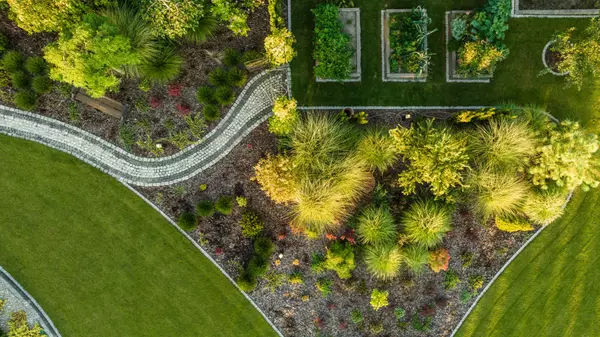Seven Alternatives to a Traditional Grass Lawn

When it comes to landscaping your yard, a traditional grass lawn may not be the only option available to you. While grass lawns have their benefits, they also require a significant amount of maintenance and can be quite water-intensive. If you're looking for alternatives that are more low-maintenance and eco-friendly, consider these seven options for a unique and vibrant yard.
1. Native Plants: Incorporating native plants into your yard not only adds color and texture but also supports local ecosystems. Native plants are adapted to the local climate and require less water and maintenance to thrive. They attract pollinators and wildlife, creating a harmonious and sustainable environment.
2. Ground Covers: Ground cover plants are great alternatives to grass lawns as they require minimal care and can withstand foot traffic. Creeping thyme, clover, and creeping phlox are just a few examples of attractive ground covers that can add beauty to your yard while reducing the need for mowing and watering.
3. Xeriscaping: Xeriscaping is a landscaping technique that focuses on using plants that are well-suited to arid conditions. By incorporating gravel, rocks, and drought-tolerant plants such as succulents and cacti, you can create a stunning landscape that conserves water and requires little maintenance.
4. Artificial Turf: For those who desire the look of a traditional lawn without the maintenance, artificial turf is an excellent option. It eliminates the need for mowing, watering, and fertilizing while providing a lush green appearance year-round. Artificial turf has come a long way in terms of realism and durability, making it a popular choice for many homeowners.
5. Moss Gardens: Moss gardens offer a unique and enchanting alternative to grass lawns. They thrive in shady areas and require minimal upkeep. Moss can create a soft, carpet-like surface that brings a sense of calmness and tranquility to your outdoor space.
6. Vegetable Gardens: Consider replacing your grass lawn with a productive vegetable garden. Not only will you enjoy the benefits of homegrown produce, but you'll also reduce your ecological footprint. Vegetable gardens can be both functional and beautiful, with raised beds, trellises, and companion planting techniques creating visual interest.
7. Hardscaping: Lastly, hardscaping refers to using non-living elements such as stone, gravel, concrete, or wood to create an appealing landscape design. Incorporating pathways, patios, and seating areas can transform your yard into a functional and low-maintenance space while reducing the need for water and upkeep.
By considering these alternatives to a traditional grass lawn, you can create a unique and sustainable outdoor space that suits your lifestyle. Whether you opt for native plants, ground covers, artificial turf, or hardscaping, each option offers its own benefits in terms of water conservation, reduced maintenance, and enhanced aesthetics. So, step outside the norms and explore these alternatives to make your yard a standout in the neighborhood.
Categories
Recent Posts











